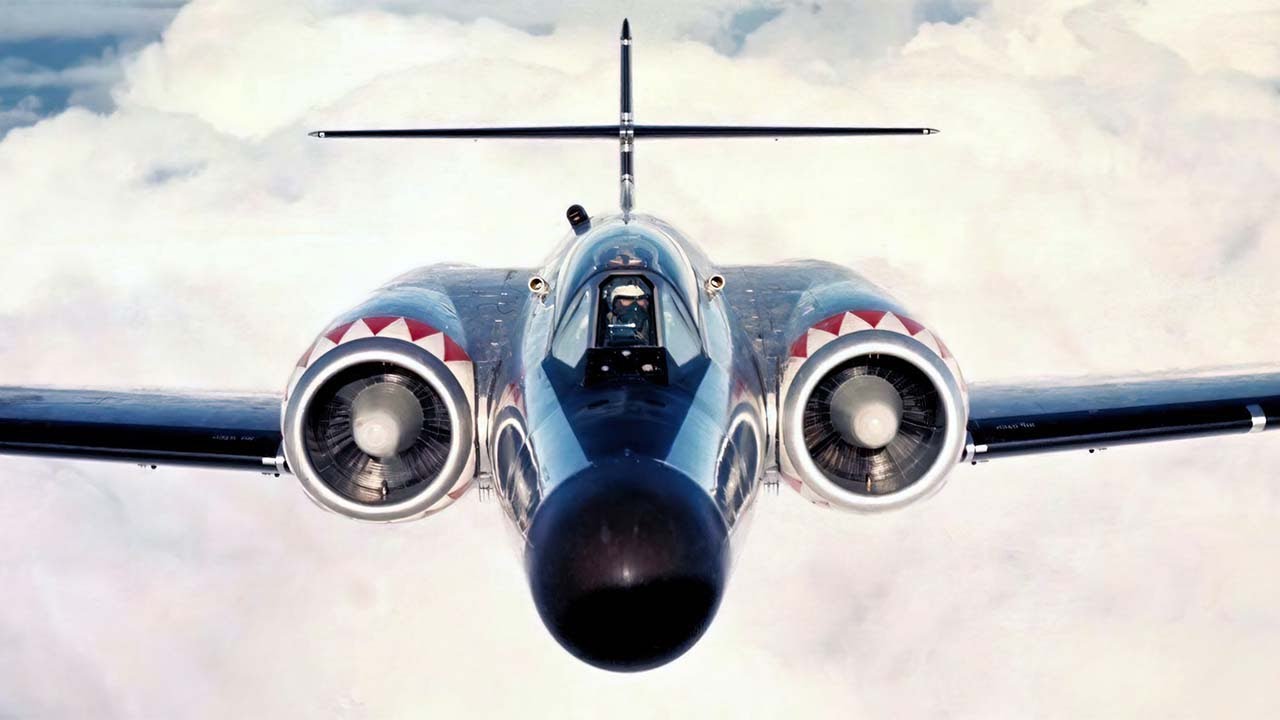Context is everything. Some of us insensitive Yanks use the word “Canuck” as a derogatory term for our neighbors in the so-called “Great White North,” i.e. Canada.
Yet it can just easily be used as a term of endearment for Canadians, as is evidenced by the Vancouver Canucks NHL team; unlike, say, my beloved beleaguered Washington Redskins, er, Commanders,
I’m not aware of anyone attempting to force the ice hockey franchise to change its nickname.
More significantly, “Canuck” is also applied as an affectionate moniker for the only Canadian-designed fighter plane to go into mass production (a sharp contrast to Canada’s NORAD and NATO partners’ many homegrown fighter planes – past and present — from the United States, France, Great Britain, and Germany alike). Say hello to the Avro Canada CF-100 Canuck.
CF-100 Canuck Early History and Specifications
The CF-100 Canuck made her maiden flight on 19 January 1950. As noted by “VinceC” (a nome de plume, obviously) in a June 2020 article for the Curbside Classics website titled “Aviation History: The Avro CF-100 Canuck – Clunking Up for 30 Years”:
“The aircraft was in the air for 40 minutes, reaching a maximum altitude of 5000 feet and a maximum speed of 215 mph. However, it had one significant problem, the landing gear wouldn’t retract, which is why the speed was limited.”
Luckily, the prototype’s bugs were eventually worked out of the system, and the plane officially entered into service with the Royal Canadian Air Force (RCAF) in 1952, whereupon she remained in service until 1981, with a total of 693 being produced.
The plane was manufactured by Avro Canada, which was Canada’s largest aircraft manufacturer before going defunct in 1962. Specifications for the production model of the CF-100 included a maximum airspeed of 640 miles per hour (0.83 Mach), a length of 54 feet 2 inches, a wingspan of 57 feet 2 inches, a height of 14 feet 6 inches, an empty weight of 23,100 pounds, and a max takeoff weight of 36,000 pounds. The warbird was powered through the air by two 6,355-lb. thrust Orenda 9 jet engines, which provided a maximum range of 2,000 miles and a ceiling of 45,000 feet. Armament consisted of eight .50-cal machine guns and 58 2.75-inch rockets.
Real-World Performance?
As far as I can ascertain, this warbird never saw actual combat, whether air-to-air nor air-to-ground. Nevertheless, to quote “VinceC” again, “For its time, it was arguably the best all-weather fighter, and for a time it was the only all-weather fighter used by NATO forces in Europe. It remained on the front lines until 1963, when it was supplanted by the American McDonnell CF-101 Voodoo, a supersonic all-weather fighter. By this time CF-100 didn’t have the speed to properly intercept new supersonic bombers, such as Russia’s TU-22 [Backfire]… However, the CF-100 continued to serve for some time after it was removed from the front lines. It was used in Electronic Counter Measures and training roles. The airframes proved to be quite durable, having double or triple the lifespans than what was originally believed. Tests showed that the airframes could last up to 20,000 hours before complete destruction.”
Where Are They Now?
Roughly 30 CF-100 Canucks survive today as static displays spread out across Belgium, Canada, the UK, and the USA; to my knowledge, there are no airworthy specimens left (if any of you dear readers know otherwise, please let us know below in the Comments section). One of the three Stateside survivors is displayed at the National Museum of the United States Air Force at Wright-Patterson AFB in vicinity of Dayton, Ohio; as the museum’s official info page notes, “Placed on display in 2005, the museum’s aircraft is painted to appear as a 428 Squadron CF-100 Mk.4A in the mid-1950s.” Amongst the numerous Canadian museums proudly displaying the Canuck are the Bomber Command Museum of Canada in Nanton, Alberta, and the Canadian Museum of Flight in Langley, British Columbia.
Christian D. Orr is a former Air Force Security Forces officer, Federal law enforcement officer, and private military contractor (with assignments worked in Iraq, the United Arab Emirates, Kosovo, Japan, Germany, and the Pentagon). Chris holds a B.A. in International Relations from the University of Southern California (USC) and an M.A. in Intelligence Studies (concentration in Terrorism Studies) from American Military University (AMU). He has also been published in The Daily Torch and The Journal of Intelligence and Cyber Security. Last but not least, he is a Companion of the Order of the Naval Order of the United States (NOUS).
From 19FortyFive
Total Massacre’: Ukraine Footage Shows Russian Cruise Missile Shipment Attacked
Video – Ukraine Has Massive New NATO ‘Cannon’ Ready To Fight Russia
‘Americans Will Pay The Price’: One Democrat Is Angry At Joe Biden

